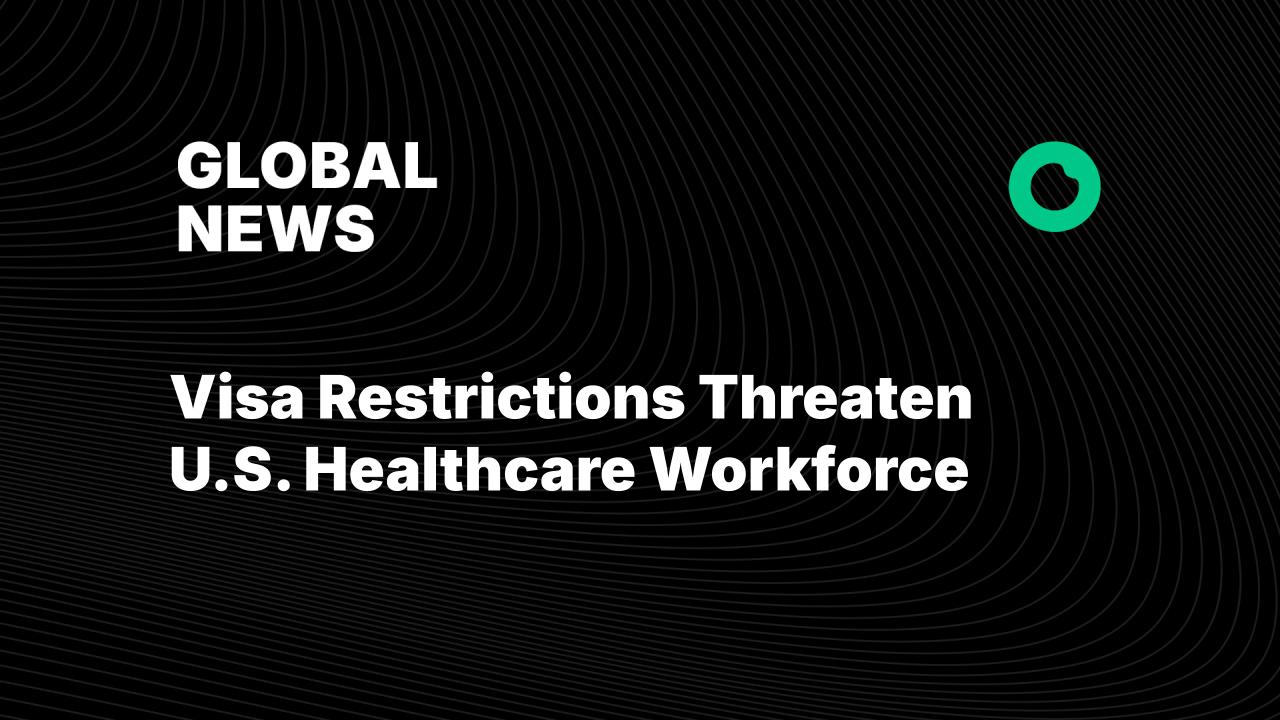The U.S. is heading toward a severe physician workforce shortage — and recent visa restrictions threaten to accelerate the problem.
On September 25, 2025, the American Medical Association (AMA), joined by dozens of national medical societies, sent a letter to Homeland Security Secretary Kristi Noem urging that physicians be exempt from the administration’s new proclamation imposing a $100,000 employer-paid fee for H-1B visa applications. The proclamation does allow exemptions for workers deemed to be in the “national interest,” and the AMA insists that physicians must be included.
“Maintaining a robust health care workforce in the U.S. that can address the health needs of all our U.S. patients is in the best interest of the health of our nation,” the AMA letter states. It notes a projected shortfall of nearly 86,000 physicians by 2036, adding: “H-1B physicians play a critical role in filling this void, especially in areas of the U.S. with high-need populations.”
Te AMA underscores how dependent the system already is on foreign-trained doctors. In 2024, 23% of licensed U.S. physicians were foreign-trained. Among them, 64% practiced in Medically Underserved Areas or Health Professional Shortage Areas, and nearly 46% in rural communities. Over the past two decades, almost 23,000 H-1B physicians have worked in underserved communities. “Nearly 21 million Americans live in areas where foreign-trained physicians account for at least half of all doctors,” the AMA notes, warning that the new financial barrier could cut off this critical supply.
The American Hospital Association (AHA) reinforced the alarm in its own letter to the administration on September 29, 2025. The AHA projected a shortage of 187,130 physicians by 2037, calling the gap “a clear threat to access and equity in patient care.” The association also flagged severe nursing shortages, estimating deficits of up to 13% in rural hospitals. The AHA urged the administration to explicitly exempt health care personnel from the H-1B changes, writing:
“Hospitals and health systems cannot meet the health needs of their communities without continued access to international medical graduates and other essential workers.”
Survey evidence shows how dependent underserved areas are on immigrant doctors. A cross-sectional study of 2,630 international medical graduates (IMGs) on temporary visas found that 64.1% were practicing in shortage areas, and nearly 46% in rural regions. During the COVID-19 pandemic, 93% reported they were unable to redeploy to surge areas due to visa restrictions, despite being frontline providers. Almost all participants (98.8%) said permanent residency would allow them to contribute more fully to the health system.
Together, the AMA and AHA emphasize that immigration rules are not a side issue but central to U.S. health security. The AMA concluded:
“The U.S. health care workforce relies upon physicians from other countries to provide high-quality and accessible patient care. We must ensure that the U.S. has a fair and efficient immigration system that strengthens health care and advances the nation’s health security.”
Final words
The debate over H-1B visa restrictions is not just a policy matter — it is a question of whether millions of Americans will continue to have access to timely, safe, and equitable health care. With physician and nursing shortages already straining the system, erecting new barriers for international medical graduates risks deepening disparities, especially in rural and underserved regions. Policymakers face a clear choice: view immigration as a liability, or recognize it as an essential part of sustaining the nation’s health care infrastructure.
